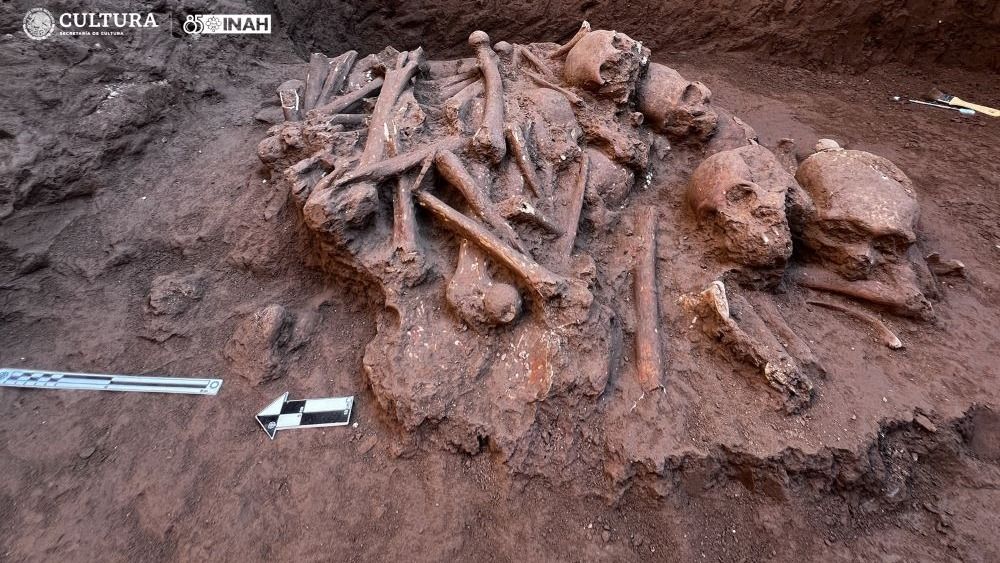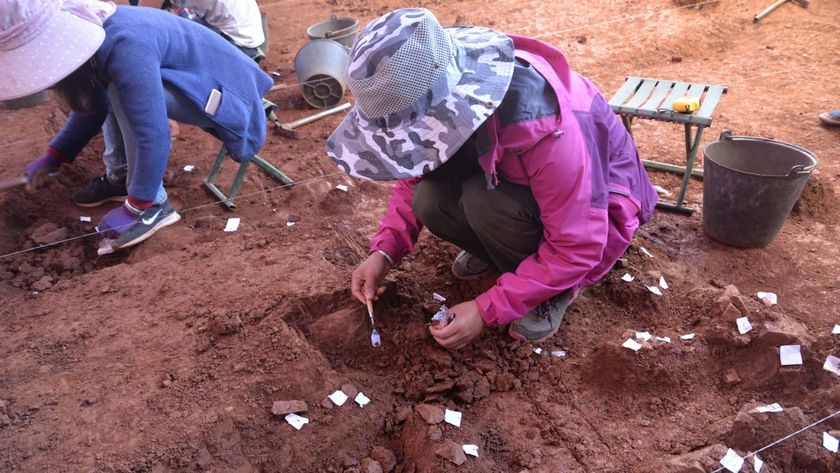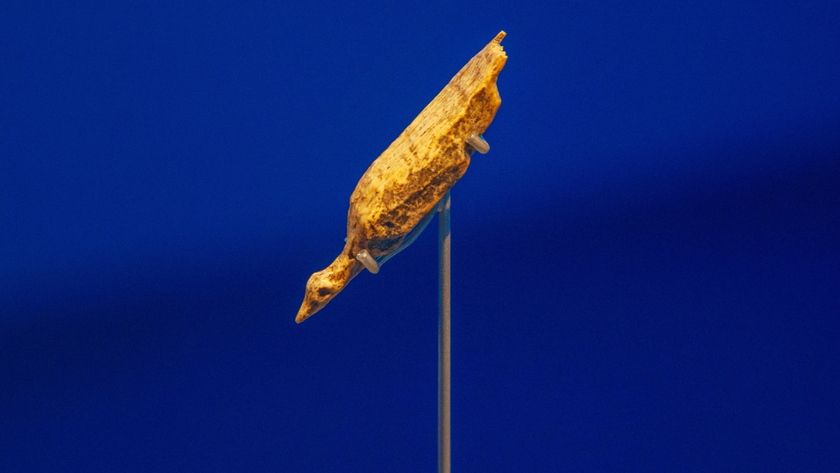1,500-year-old burial with stacked bones discovered during sewer system dig in Mexico
Archaeologists in Mexico discovered a pre-Hispanic burial containing human remains.

Archaeologists in Mexico have uncovered a 1,500-year-old burial of human remains, whose bones were stacked, possibly as part of a ritual.
The pre-Hispanic discovery was made during a sewer system construction project at Pozo de Ibarra in the western Mexican state of Nayarit, according to a translated statement from Mexico's National Institute of Anthropology and History (INAH).
The burial contained one complete skeleton, along with human bones from other individuals. Some of the bones were intentionally stacked, and they were separated into different categories, with long bones like femurs (thigh bones) and tibias (lower leg bones) in one section and seven complete skulls in another, Claudia Servín Rosas, a field archaeologist with the INAH who led the excavation, said in the statement.
An analysis revealed that all of the skulls belonged to men of various ages, with some of the specimens showing signs of cranial modification, which was frequently practiced in Mesoamerica.
Researchers determined that the bones were interred simultaneously and that the funerary rituals were reminiscent of similar practices done during the Amapa era, which stretched from A.D. 500 to 850.
Related: 2,500-year-old burials of 3 people discovered in cave in Mexico
Ceramic vessels and figurines found at the site also helped archaeologists link the burial to this time period, according to the Miami Herald.
Sign up for the Live Science daily newsletter now
Get the world’s most fascinating discoveries delivered straight to your inbox.
Servín Rosas thinks the burial could have been part of family funerary rites in which men were buried to commemorate the establishment of a new settlement. However, there are no other records of similar practices in the region, according to the statement.
The INAH is working with town authorities to preserve the remains for future study.
Jennifer Nalewicki is former Live Science staff writer and Salt Lake City-based journalist whose work has been featured in The New York Times, Smithsonian Magazine, Scientific American, Popular Mechanics and more. She covers several science topics from planet Earth to paleontology and archaeology to health and culture. Prior to freelancing, Jennifer held an Editor role at Time Inc. Jennifer has a bachelor's degree in Journalism from The University of Texas at Austin.












